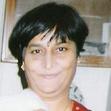Ilaxi Patel's Blog: Moms Zone, page 19
April 10, 2018
Submit your Poem
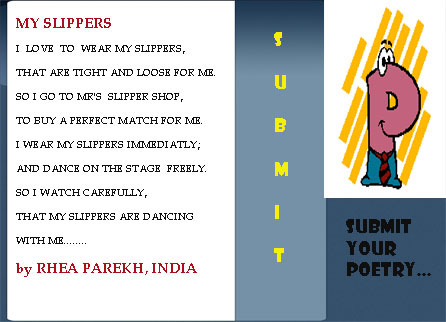
WRITE A POEM! SPIN A STORY!
Calling all budding poets and blossoming authors and writers to squeal and squabble the hidden imagination in your brainy heads. Live the fantasy and don’t just let your imagination run dry! It’s time to make a great Poem or weave a story – Be original, Be imaginative, Be realistic or just fantasy. Make it adventurous or a thriller, humorous or fabulous, thought provoking or concerned, a travel or animal related, school story or a mystery. And lo, KidsFreesouls is here to help you shrug off the blues.
Just hook to our ideas and ‘Get-set-right’ to trail to hold the reigns of Rudolf’s sleigh this Christmas time. Write your right way out & Enjoy!
It’s Only Words…..And words are all that can take your heart away….
Email: kidsfreesoul@gmail.com
Your POETRY PAGE
The post Submit your Poem appeared first on Newspaper for Kids with Resources for Parents and Teachers Wonderland of Information – Education – Entertainment - kidfreesouls.com.
April 7, 2018
Kidsfreesouls all time favorite games
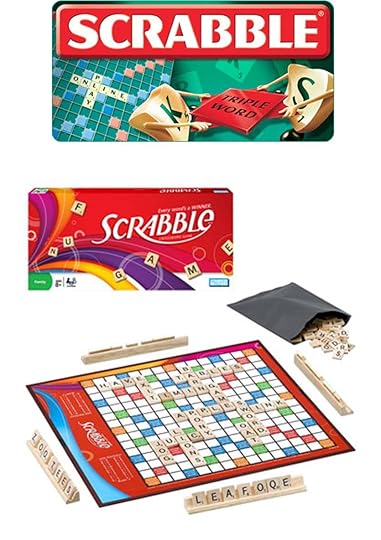 scrabble
scrabbleClassic Games
A recent research says that most of the Children are connected to Social Networks with Outdoor and Indoor Games almost being eradicated. While conducting a session at Swagat Children Library, it was revealed that many children did not have time for play. Their free hours were watching Television or hooking to Facebook or searching Google for Project work. They have neither heard nor played games that we use to play in our childhood! While discussing games, the session soon escalated into a full-on debate about over favourite childhood games; from the delights of car games, Mario, Pokemon to excitement of hide ‘n’ seek to playing Passing the Parcel and such fun.
And so, Kidsfreesouls decided to list Favourite Childhood Games – many of which we wish we could still indulge in and play. Here’s the compilation and am sure, it will be a lot excitement if you conduct Games Session in classrooms or in groups while children make Connections, making friends.
Monopoly
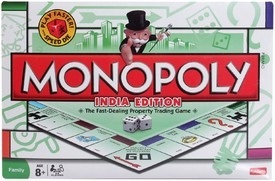 monopoly
monopolyMonopoly is one of the most popular business board games in the world. Funskool Monopoly is the most selected India Edition Board Game which brings this game with an Indian touch. All the places that you can buy, sell or trade in this version are Indian cities. This is a fun game for both girls and boys as it helps them understand how a business works. It is suitable for anyone aged 8 and above. The Funskool Monopoly India Edition comes with 10 main pieces per carton along with play money, hotel and house pieces. You play this multiplayer game by taking turns and throwing the dice which also includes a speed die in this version. The speed die makes the game faster which prevents long drawn-out games that tend to be boring. Beat your opponents by bankrupting them by charging them rent when they land on your property.
Scrabble
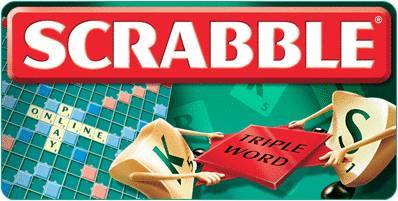 scrabble
scrabbleSCRABBLE Brand Crossword game was invented by Alfred Mosher Butts, a young out-of work architect, in the midst of the Great Depression. The games fall into three categories: number games, such as dice and bingo; move games, such as chess and checkers; and word games, such as anagrams. The game was originally named Lexico, but Butts eventually decided to call the game “Criss-Cross Words.”
You should have a game board, 100 letter tiles, a letter bag, and four racks.
Before the game begins, all players should agree upon the dictionary that they will use, in case of a challenge. All words labeled as a part of speech (including those listed of foreign origin, and as archaic, obsolete, colloquial, slang, etc.) are permitted with the exception of the following: words always capitalized, abbreviations, prefixes and suffixes standing alone, words requiring a hyphen or an apostrophe.
Place all letters in the pouch, or facedown beside the board, and mix them up. Draw for first play. The player with the letter closest to “A” plays first. A blank tile beats any letter. Return the letters to the pool and remix. All players draw seven new letters and place them on their racks.
Hopskotch
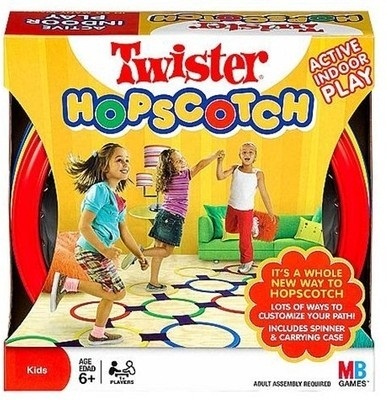 hopskotch
hopskotchHopping is a traditional game of yester years. Hopping in a straight line, on a chalk drawn board. In India, this game is still being played by girls. Replaced with Twister Hopscotch, the game is an innovative retake on the favorite outdoor game. Make up your own way across the board with the durable, slip-proof rings and follow the directions dictated by the spinner. The movable rings of the Games Twister Hopscotch allow your to chart your own path, and customize your game for a new experience each time you play. It makes a great indoor game. Now you can play hopscotch all year round with this exciting game. The game is suitable for boys and girls who are aged 6 years and above. The Twister Hopscotch Game comes with 13 movable rings, 16 ring clips, a spinner with an arrow and base, a carrying case and instructions. Master the skills of balance and coordination to win this must-have game.
Blindman’s Bluff
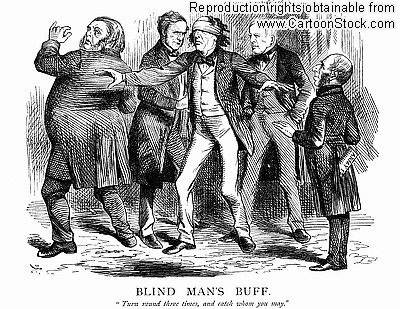 Blindman’s Bluff
Blindman’s BluffPhoto credit: Wikipedia, the free encyclopedia
A traditional children’s game, Blind Man’s Bluff is just as fun when played together in groups. Select one player as the blind man and have this person put on the blindfold while he is standing in the center of the room or area of play. Spin the blind man around a couple of times so that she becomes disoriented. You can also ask that she counts to 100 to give the other players time to move away and hide.
Pass the Parcel
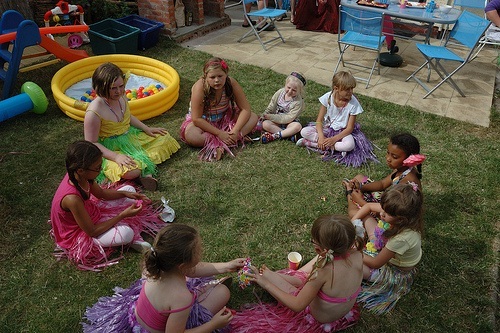 Pass the Parcel
Pass the ParcelPhoto credit: TomGough, Flickr (http://www.flickr.com/people/45072550@N03)
Children play at parties and can also be a great game for adults just by making slight variations. The idea is to pass around a parcel wrapped in many layers that has a gift in the middle. In the musical variety, the parcel can only be passed when music is playing. As soon as the music stops, one layer can be unwrapped until the surprise in the last layer is reached. Three variations on this game are provided here; two musical and one descriptive. In another version, when the parcel is passed, music plays and when music stops, the person who has the parcel in hand gets the punishment – can be dancing, singing, acting, etc. as decided upon.
Skipping Rope
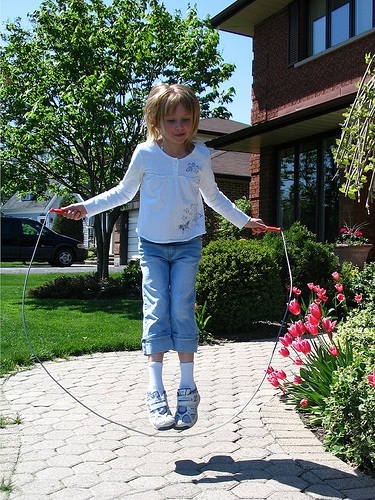 Skipping Rope
Skipping RopePhoto credit: RichardBH (http://www.flickr.com/people/81076746@N00)
Skipping rope is the traditional game played by children since decade. Many skipping games and rhymes have been sung while doing so. Children have found ways to play, pass on, skip and hop, jump and sing-a-along. Also fun game for exercising and is often now used at gyms.
Hide and Seek
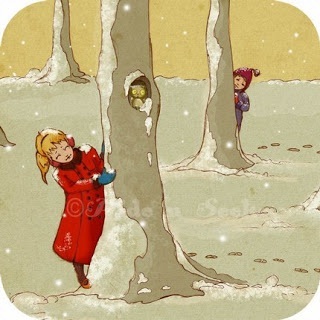 Hide and Seek
Hide and SeekHide ‘n Seek Print
Hide and go seek is the theme of the game. Number of Children hide and one go in search spree to find where they’re hidden! When the hidden child is found, his turn begins to find the others. Fun when played together in turns for searching the hidden. For some, trouble of finding hidden friends is bit scary sometimes as they cannot be found. Also naughty children run away to play other games leaving the younger one alone hidden to be found. A traditional game played through years.
Musical Chairs
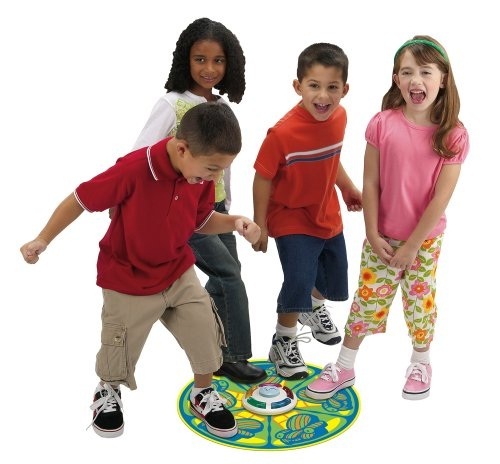 Musical Chairs
Musical ChairsBuy the Game from Amazon.com
A party game – for kids and adults alike who love the fun. Chairs are placed in a line in opposite directions. When the music begins, players walk all way round through all chairs and when the music stops, the players have to grab and sit on the chair. One player is eliminated who don’t get a chair. If there are 15 chairs and 20 players, 5 will lose the game. Played in open, in homes or classrooms, there comes Electronic version too. iPlay Action Games have Electronic Musical Chairs with 6 different tunes and a classic party game in a box.
Leap Frog
Childhood game fun. A nerve-jangling contest of courage and judgement, it’s little wonder that leap frog continues to draw a crowd in playgrounds the world over. Get it right and you’re soaring through the air; get it wrong and you end up collapsing and/or kicking your mate in the head. The game requires enough leap at the right time so as not to bump on.
 Leap Frog
Leap FrogTree Climbing
With Environment problems, it’s pretty much impossible to see a magnificent, broad-boughed tree and not rate it in terms of climb-ability. As a child, there was nothing better than finding a big tree with plenty of branches and footing crags to scramble up. A lucky child will have the thrill of swinging on the boughs and climb the tree to sit on the branches and watch a cricket or a hockey match like I did in my childhood!
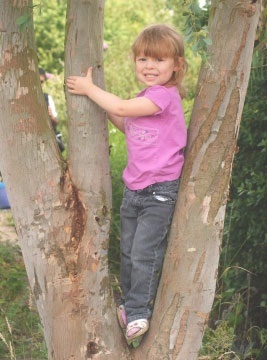 Tree Climbing
Tree ClimbingPhoto credit: pgpedia, The Play and playground Encyclopedia (http://www.pgpedia.com/t/tree-climbing)
Snakes and Ladders
Played through years and mostly summer fun, the Snakes and Ladders is the most popular game. The thrill of Snakes & Ladders lies in the potential of being swallowed by snakes at every turn. Success was also marked by the ability to climb ladders if you did well.
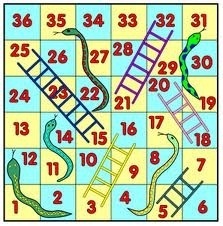 snakes and ladders
snakes and laddersKite Flying
The most famous Kite flying game is popular in Gujarat. Kite flying is done mostly in the month of January esp. 14th January marked as Kite flying day. Flying colorful kites in the sky with the help of a string (the string is specially made) and the wind carry the kite in the sky. The flyer need to master the skill of flying and make the kite float in the air with his tricks. The chilly wind sometimes threaten to tug you off your feet at every gust of wind. Even cut the kites of others to keep yours still flying and it requires skill.
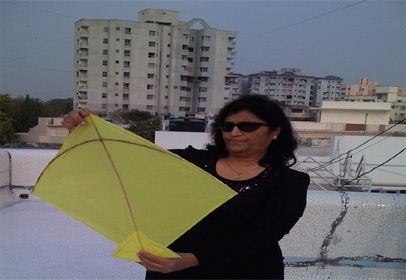 kites flying
kites flyingPhoto copyright: kidsfreesouls.com
Marbles
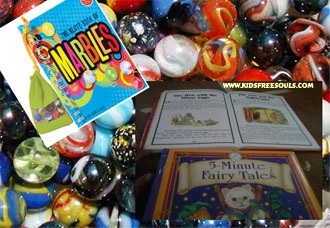 marbles
marblesMarbles is a game that can’t resist with the colorful wonder. You can trade them, barter with them, smash them into each other or amass them as a sweaty collection in your backpocket. Summer game and playing marbles is a game of wit and sharpness. Also a game of accuracy.
Tops (Latoo)
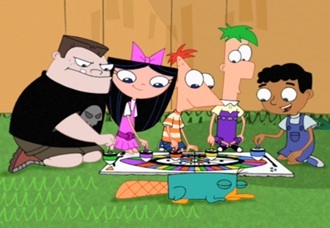 tops
tops
Photo Credit: Phineasandferb wikia (http://phineasandferb.wikia.com/wiki/File:Spinning_tops_board_game_-_cropped.png)
A very common childhood games played in 50s. Indian children consider this a street game and a game that is often played during summer vacation while playing at noon time. Though there is no fix time to play, there is even no limit to how many Kids can play at a time. The tops have a pointed end on which they can spin. These tops are spinned with a string. The player throws the top down on the ground and jerk on the string to get the top to spin. This requires some skill on the player’s part, since the Top that isn’t tossed properly may break or start to spin off balance on the floor. The player whose Top spins the longest wins the game. There needs to be enough room in the area of play to let each player spin his Top freely. Games like Battle Tops and Spinning Top Board game boxes are available online.
Kabbadi
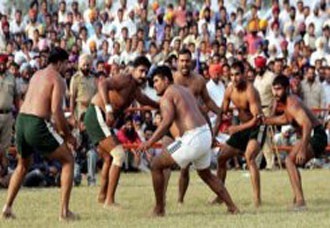 kabbadi
kabbadiTwo teams and a line dividing the two teams – a game similar to tag that is played in teams. Each team must have at least five players, but there really is no limit to how many Children may be in a team. One player from one team crosses the line that divides the team. The player who crosses the line chants “Kabaddi” over and over again for as long as he can with one breath. As he runs and chants, he tries to turn out at least one member of the opposing team by touching them. Members from the team he is challenging may try to turn out him in the same way. When he has turned out a member of the opposing team or run out of air, he crosses back to his side. Then another player from the first chanter’s team goes out across the line and takes a turn at chanting and tagging. Play continues until all members of one team are turned out.
Gilli Danda
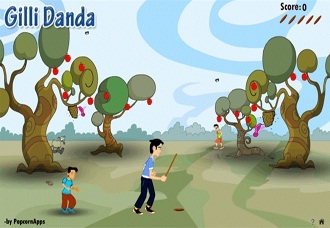 Gilli Danda
Gilli DandaPlay the Game: http://www.appup.com/app-details/gilli-danda
Gilli-danda is a game played by using one small stick (gilli) and a large stick (danda) like cricket with ball being replaced by gilli. Often played in summer vacations by two players. The gilli is placed widthwise in a dug hole and hit by danda. The highest hit wins. It is still played in Gujarat and other parts of India too.
statue-statue
A favorite game of the fifties and sixties, Swing the Statue will still be enjoyed by children today. It’s fun to try to hold a pose, but even more fun to watch others in their strange positions. Two players decide to bond in statue. Whenever they meet, randomly the word ‘Statue’ is uttered by one and the other stand as Statue – holding a pose as he is. Fun continues and the statue should not shake until he says, ‘Go’
Sack Race
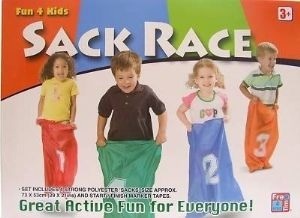 Sack Race
Sack RaceA game of sack for racing in. Hopping with the sack and trying to win the race without a fall. The game of sack is fun which require patience. The child wears the sack and hops through the line to compete another. The first who reach the line wins the game. No falls or you hurt while sack racing. The Kids Garden Sack Race Game Boxes are even available on the net at http://www.itstoytastic.co.uk
Lemon Spoon Race
Standing in a queue to compete each other with a spoon in the mouth holding the lemon ! When the referee whistles, the child have to run to reach the goal. Neither the lemon that is placed on the spoon nor the spoon should fall down.
Ring a Ringa Roses
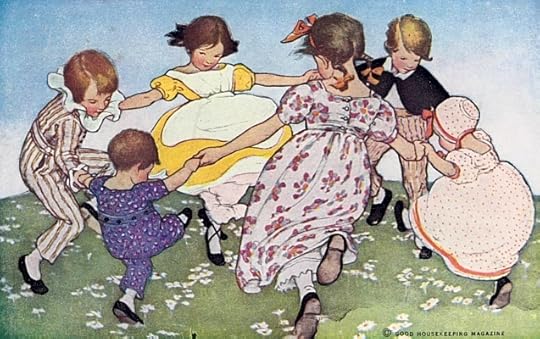 Ring a Ringa Roses
Ring a Ringa RosesPhoto credits: Gutenberg (http://www.gutenberg.org/files/20511/20511-h/20511-h.htm)
Rhymes and fun in classroom with Ring a Ringa Roses, Pocketful of Posies. Children have fun going round and round holding hands and fall on ground saying ‘husha-husha, we all fall down. This game is very popular and played anywhere – in classroom, parties, etc. There is strong bond of friendship, unity and togetherness while playing this game.
Tug of War
Two teams. Grabbing a rope and tugging on it very hard from both ends. With no complicated rules, it’s a recipe for lots of yelling and ultimately, sore bums, as half the team collapses in a heap. School games for fun and children learn how to face defeat, striving for winning and unity.
The post Kidsfreesouls all time favorite games appeared first on Newspaper for Kids with Resources for Parents and Teachers Wonderland of Information – Education – Entertainment - kidfreesouls.com.
April 4, 2018
Interactive Story Telling at YMCA International Centre (Club) : Super Fun for Children
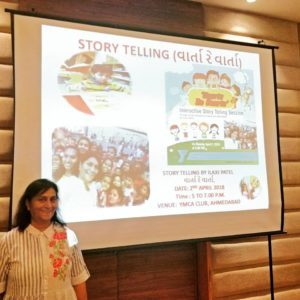
Conducted Interactive Story Telling Session (by Ilaxi Patel, Author of Guardian of Angels and Editor, Kidsfreesouls) held at YMCA Club on International Children’s Book Day on Hans Christian Andersen Birthday, 2nd April.
Thank you YMCA International Centre – Ahmedabad for the wonderful opportunity. Been an immense feeling of Gratitude and am glad to touch the little hearts and minds to inspire love for reading.
Stories in English and Gujarati were told with tips on How to write a story, exposure to world of Classics and Moral values in stories. Worksheets on Table Manners, Coloring and Story Quiz was held too.
Children had fun interactive stories to tell. How to narrate, phonics, expression and voice modulation points were highlighted. Children had fun with Rote story which built Team spirits and being friendly. . At the onset of Technology and Gadget use, Children were guided for Reading and encouraged for creativity. Technology and online stories on You Tube, kids videos are in and with these Tom and Jerry, Mickey Mouse, Chhota Bheem Moral values were highlighted as to what Children can learn from these Characters.
Stories in Gujarati were told and narrated by grandparents and moms too – love for mother tongue and why both English and Gujarati are equally important was pointed out.
The Story Telling medium has been a message to inspire love for reading and cultivating reading habits making the kids dive into the imagination World.
– Ilaxi Patel,
Author of Guardian of Angels
Editor, Kidsfreesouls.com
For more Professions, follow About Us Page
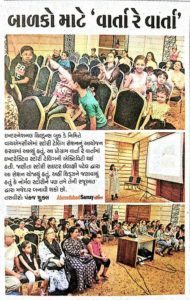
Navgujarat Ahmedabad Samay : e Paper
http://epaper.navgujaratsamay.com//imageview_6608_44673_4_72_03-04-2018_3_i_1_sf.html

City Bhaskar e Paper : http://epaper.divyabhaskar.co.in/detail/70690/4313856417/0/map/tabs-1/2018-04-03/44/2/image/
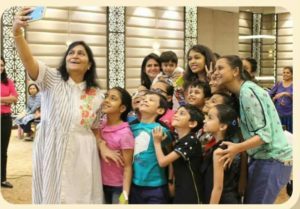
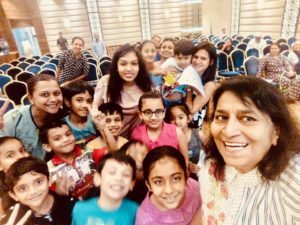
A Feel Good Factor.. The last moment #Selfie Click with some at Interactive Story Telling Session at YMCA…
Happiness Unlimited!
YMCA INTERNATIONAL CENTRE : THE YMCA CLUB AT AHMEDABAD
The Presentation will be on kidsfreesouls and Slideshare soon…
Live videos can be viewed on my Facebook Profile @ilaxi.patel
You Tube : TV Media and other Events :
#storytelling #ymcaahmedabad #vaartarevaarta #InternalChildrensBookDay #YMCA #moralvalues #YMCAClub #news #newspiece #newspaper
The post Interactive Story Telling at YMCA International Centre (Club) : Super Fun for Children appeared first on Newspaper for Kids with Resources for Parents and Teachers Wonderland of Information – Education – Entertainment - kidfreesouls.com.
March 31, 2018
Hans Christian Andersen
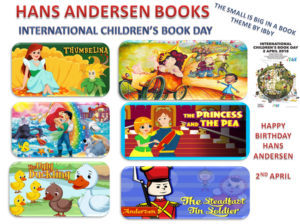
Hans Christian Andersen
(April 2, 1805 – August 4, 1875)
Hans Christian Andersen was born on April 2, 1805, a shoe-maker’s son who became Denmark’s famous author. Anderson wrote around 350 stories. Even after his death Hans Christian Andersen is still remembered today. Hans Anderson died on August 4, 1875. Denmark’s people always celebrate his birthday with a party called “Odin Story Day”. The Andersen home in Odense is now a museum, and thousand of people visit it every year. Anderson’s stories are too popular and with a touch of humor as well as kind feeling for the poor, his own childhood experiences reflects in his tales.
Hans stories are ‘Classic of the classics’ coz the beautiful stories lets your imagination go surfing on ‘cloud nine’ and these tales conveys moralistic message. Totally, an amazing fairy tales of Hans Andersen that grips you delightfully reading even as an adult.
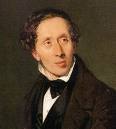
Hans Christian Andersen came from a Royal Danish family. However, there is speculation till date that he may have been illegitimate son of the Royal family. As he grew up, Hans Christian was forced to support himself. He worked as a weaver’s apprentice and later, for as a tailor. At 14, he moved to Copenhagen to seek employment as an actor. Having an excellent soprano voice, he was accepted into the Royal Danish Theatre, but his voice soon changed. A colleague at the theatre told him that he considered Andersen a poet. Taking the suggestion seriously, he began to focus on writing. In the Copenhagen harbor there is a statue of The Little Mermaid, placed in honor of Hans Christian Andersen.
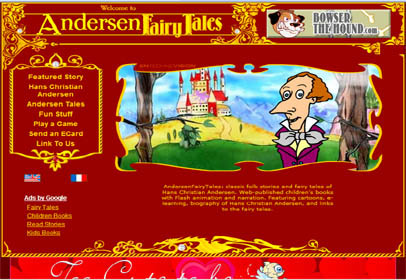
Andersen’s first novel, The Improvisatore, was published at the beginning of 1835, which became an instant success. During 1835, Andersen published the first installment of his immortal Fairy Tales (Danish: Eventyr). More stories, completing the first volume, were published in 1836 and 1837. The quality of these stories was not immediately recognized, and they sold poorly. At the same time, Andersen enjoyed more success with two novels: O.T. (1836) and Only a Fiddler. His Specialty book that is still known today was the Ugly Duckling (1837).
ANDERSEN’S HOME – DENMARK’S ODENSE MUSEUM
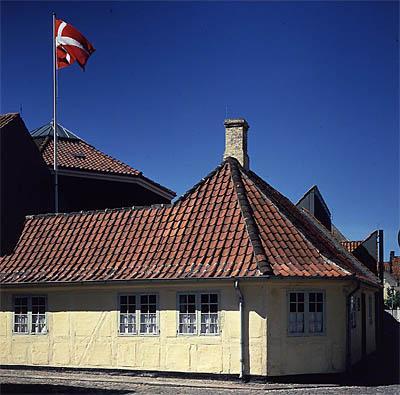
Founded in 1905, the place displays Andersen’s photos, furniture and books. In it is a huge library featuring the Danish and foreign versions of the author’s works and collection of illustrations.
The museum is situated in an 18th century house in which the author has been born and spent a small part of his childhood. It contains a smorgasbord of Andersen’s memorabilia, pictures and photographs, samples of his writings and artwork as well as a library that contains works of Hans Christian Andersen that have been translated in over one hundred of the world’s languages. The most impressive part of the museum for me was a large hall displaying wall-sized murals by Danish painter, Niels Larsen Stevns, which depicted major events of the author’s life. From his childhood and a traumatic departure from home, to his accession as Odense’s honorary citizen, the paintings give a visitor a quick and concise introduction to Andersen.
The museum is a necessary stop for anybody interested in the author’s history.An incredible educational experience to enhance appreciation of Andersen: It gives insight of his writing (hundreds of works) and seeing examples of his sketches and paper cutouts. Not only an Author, a talented artist as well.
BOOK LIST OF HANS ANDERSEN
Hans Andersen’s stories began to be translated into English as early as 1846.
Anthologies:
Imperial Messages (1976)
Black Water (1983)
Mythical Beasties (1986)
Christmas Story Book, the (1986)
Double/Double (1987)
Funny Stories (1988)
Spells of Enchantment (1991)
Mammoth Book of Fairy Tales, the (1997)
Fantastic Tales: Visionary and Everyday (1997)
Poems:
Woman with the Eggs, the (1836)
Comet, the (1869)
Short Stories:
Princess and the Pea, the (1835)
Thumbelina (1835)
Little Claus and Big Claus (1835)
Little Ida’s Flowers (1835)
Tinderbox, the (1835)
Traveling Companion, the (1835)
Emperor’s New Clothes, the (1837)
Little Mermaid, the (1837)
Steadfast Tin Soldier, the (1838)
Wild Swans, the (1838)
Flying Trunk, the (1839)
Wicked Prince, the (1840)
Swineherd, the (1841)
Ugly Duckling, the (1843)
Nightingale, the (1843)
Sweethearts, the; or, The Top and the Ball (1843)
Snow Queen, the (1844)
Fir Tree, the (1844)
Little Match-Girl, the (1845)
Red Shoes, the (1845)
Darning Needle, the (1845)
Shepherdess and the Chimney-Sweep, the (1845)
Shadow, the (1847)
Old House, the (1847)
Pea-Blossom, the (1852)
For Sure! For Sure! (1852)
Goblin and the Grocer, the (1852)
Clumsy Hans (1855)
Snow Man, the (1861)
What the Old Man Does Is Always Right (1861)
Cripple, the (1872)
(courtesy: Internet Book List)
Step into the world of Imagination : Story Telling by Ilaxi Patel, Editor Kidsfreesouls at YMCA Club
Small is Big in a Book : International Children’s Book Day
The post Hans Christian Andersen appeared first on Newspaper for Kids with Resources for Parents and Teachers Wonderland of Information – Education – Entertainment - kidfreesouls.com.
Step into the world of Imagination : Story Telling

Step into the world of imagination – ocean of Knowledge.
Once upon a time….Thus begins the Fairy tale and right away, from those first few words, one’s heart warms in anticipation of fantastic wonders and the unexpected, the end!
Come, join me alone or with your Children to experience the World of Magic Fairyland – An Interactive Session fun filled with words, action, visuals, Story Quiz, Worksheets, Visuals and more!
For Toddlers to 12-13 years 
Small is Big in a Book : International Children’s Book Day
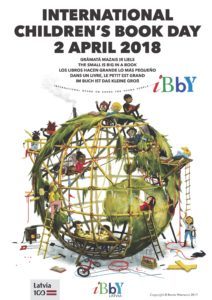
International Children’s Book Day falls on 2nd April on the Birthday of Hans Christian Andersen.
Since 1967, on or around Hans Christian Andersen’s birthday, 2 April, International Children’s Book Day (ICBD) is celebrated to inspire a love of reading and to call attention to children’s books.
Each year a different National Section of IBBY has the opportunity to be the international sponsor of ICBD. It decides upon a theme and invites a prominent author from the host country to write a message to the children of the world and a well-known illustrator to design a poster. These materials are used in different ways to promote books and reading. Many IBBY Sections promote ICBD through the media and organize activities in schools and public libraries. Often ICBD is linked to celebrations around children’s books and other special events that may include encounters with authors and illustrators, writing competitions or announcements of book awards.
IBBY Latvia is the sponsor for International Children’s Book Day 2018.
MESSAGE FROM LATVIA WITH THEME : THE SMALL IS BIG IN A BOOK
GREETINGS ON THE INTERNATIONAL CHILDREN’S BOOK DAY FROM LATVIA!
Latvian Section of IBBY is very proud and happy that exactly in 2018 it has become the ICBD sponsor of the International Children’s Book Day because thisis the year of celebrating the 100th anniversary ofestablishing Latvia as a state. Choosing the theme ‘THE SMALL IS BIG IN A BOOK’ we want to stress that the word “small” is a relative concept. With courage,belief in our ideals, foresight, perseverance and thepower of talent we make our literature and the art ofbooks significant and meaningful. 25 years have elapsed since Latvia joined theInternational Board on Books for Young People.Every year we celebrate 2nd April in different eventsin libraries and schools; we celebrate Hans Christian Andersen’s birthday, we remember the thoughtexpressed by Jella Lepman, the founder of IBBY thatgood children’s literature builds bridges betweennations. We are always grateful for the IBBY posterand translate it into Latvian which belongs to the Balticlanguage group and is the mother tongue for 1.7million people.
The message THE SMALL IS BIG IN A BOOK by the prominent Latvian writer Inese Zandere is greetings to the world on the International Children’s Book Day.
The poster is created by a well-known Latvian illustrator and animation film artist Reinis Petersons
International Board on Books for Young People
THE SMALL IS BIG IN A BOOK
People are inclined toward rhythm and regularity, just as magnetic energyorganizes metal shavings in a physics experiment, just as a snowflake creates crystalsout of water. In a fairy tale or poem, children enjoy repetition, refrains, and universalmotifs because they can be recognized anew each time – they bring regularity to atext. The world gains a beautiful order. I still remember how as a child I struggled with myself over justice and symmetry, over equal rights for the left and the right:if I tapped a beat on the table, I counted how many times each finger got to play, sothat the other ones wouldn’t be offended. I tended to applaud by patting my righthand with the left, but then I thought that it was unfair and learned to do it the otherway – left on right. This instinctive aspiration for balance is funny, of course, but itshows the need to prevent the world from becoming lopsided. I had the feeling thatI was the one who was responsible for the balance of it all. Children’s inclination toward poems and stories likewise stems from their needto bring regularity to the chaos of the world. From indeterminacy, everything tendstoward order. Nursery rhymes, folk songs, games, fairy tales, poetry – all theserhythmically organized forms of existence help small people structure their presencein the greater chaos. They create an instinctual awareness that order is possible inthe world and everyone has his or her unique place in it. Everything works towardthis goal: the rhythmic organization of the text, the rows of letters and the designof the page, the impression of the book as a well-structured whole. The greatis revealed in the small and we model this in children’s books even if we are notthinking about God or fractals. A children’s book is a miraculous force that promotesthe small person’s great desire and ability to be. It promotes his or her courage tolive.In a book, the small is always big, instantly, not just upon reaching adulthood.A book is a mystery in which something unsought can be found, or somethingbeyond one’s reach. That which readers of a certain age cannot grasp with theirminds remains in their awareness as an imprint and continues to act even if notthoroughly understood. A picture book can function as a treasure chest of wisdomand culture even for adults, just as children can read a book intended for adults andfind their own story, a hint about their budding lives. Cultural context shapes people,laying down the bed for impressions that will arrive in the future, as well as for thetrying experiences they will have to survive while keeping themselves whole.A children’s book signifies respect for the greatness of the small. It signifies aworld that is created anew each time, a playful and beautiful seriousness, withoutwhich everything, including children’s literature, is just empty busywork.
THEMES
2017 Russia Theme Let Us Grow With the Book Poster Design Mikhail Fedorov Message Sergey Makhotin
2016 Brazil Theme Once Upon a Time Poster Design Ziraldo Message Luciana Sandroni
2015 UAE Theme Many Cultures One Story Poster Design Nasim Abaeian Message Marwa Obaid Rashid Al Aqroubi
2014 Ireland Theme Imagine Nations through Story Poster Design Niamh Sharkey Message Siobhán Parkinson
2013 USA Theme Bookjoy around the World Poster Design Ashley Bryan Message Pat Mora
2012 Mexico Theme Once upon a time, there was a story that the whole world told Poster Design Juan Gedovius Message Francisco Hinojosa
2011 Estonia Theme The Book Remembers Poster design Jüri Mildeberg (aka Jüri Mildebergius) Message Aino Pervik
2010 Spain Theme A book is waiting for you, find it! Poster design Noemí Villamuza Message Eliacer Cansino
2009 Egypt Theme I am the World Poster design Hani D. El-Masri Message EBBY
2008 Thailand Theme Books Enlighten: Knowledge Delights Message and poster Chakrabhand Posayakrit
2007 New Zealand Theme Stories Ring the World Message Margaret Mahy Poster Zac Waipara
2006 Slovakia Theme The Destiny of Books is Written in the Stars Message Ján Uliciansky Poster Peter Cisárik
2005 India Theme Books Are My Magic Eyes Message Manorama Jafa Poster Jagdish Joshi
2004 Greece Theme The Light of the Books Message Angeliki Varella Poster Nicholas Andrikopoulos
2003 Brazil Theme The World in an Enchanted Network Message Ana Maria Machado Poster Rafael Fabrice Yockteng Benalcázar
2002 Austria Theme Climbing Up Book By Book Message Renate Welsh Poster Maria Blazejovsky
2001 Hungary Theme Books Have It All Message Éva Janikovszky Poster Krisztina Rényi
2000 Finland Theme The Secret Is in the Book, the Book Is the Secret Message Hannele Huovi Poster Mika Launis
1999 Spain Theme My Book, My Love Message Miguel Angel Fernández-Pacheco Poster Javier Serrano
1998 Belgium Theme Open the Book and the Magic Starts Message Bart Moeyaert Poster Gabrielle Vincent
1997 Slovenia Theme Childhood Is Poetry of Life. Poetry Is Childhood of the World Message Boris A. Novak Poster Matjaz Schmidt
1996 Denmark Theme Books Are a Passport to the Inner World Messag Bjarne Reuter Poster Lilian Brøgger
1995 Japan Theme Books – a Shared Experience Message Shigeo Watanabe Poster Kaoru Ono
The post Small is Big in a Book : International Children’s Book Day appeared first on Newspaper for Kids with Resources for Parents and Teachers Wonderland of Information – Education – Entertainment - kidfreesouls.com.
March 22, 2018
When the Chief fell in Love – Tuhin A Sinha
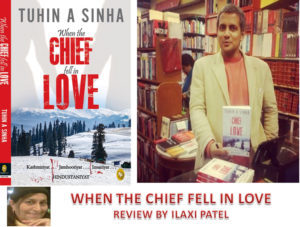
Gripping Story – a Political thriller
Imagine humming the Freddie Mercury song,
“Love me like there’s no tomorrow, hold me in your arms, tell me you mean it
This is our last goodbye and very soon it will be over, But today just love me like there’s no tomorrow…”
Truly, the Chief fells in Love and pierces the heart to fall apart yet when the last rays of the sun fades away, leaves behind a brilliant red sky – just like the lovers, Vihaan and Zaira Bhat kisses each other at the most gorgeous Turtle Beach in Cancun.The tale of lovers totally summarize the gripping sub title of the Book ‘Kashmiriyat, Jamhooriya, Insaniyat, Hindustaniyat’ In the Author’s own words, Tuhin says, “the word Hindustaniyat is a reiteration that Kashmiriyat (Kashmir’s unique identity), Jamhooriyat (democracy) and Insantiyant (humanity), exists within the ambit and tenets of the Indian statehood and Constitution.”
Vihaan and Zaira – main characters fell in love only to part and re unite with emotional feelings of loneliness and lostlove in hearts. Ritu (Vihaan’s wife) and Aziz (Zaira’s Husband) meant just a human bonding but at the back of the mind, the love bubbled as both felt a void without each other. The story starts with a Terrorist attack at an army camp in Kashmir during 2016 when Vihaan is the Defence Minister.To his surprize and disbelief, fate brings back Zaira Bhat back into his life once again. Zaira is the daughter Bilal Mohammad Bhat, a Businessman in Kashmir has been a supporter to Pakistan. This complicates and plays a complex role that hinders the love affair of the duo. Profession and love for nation stands first for the Defence Minister Vihaan Shashtri with commitment, integrity and honesty. His resignation comes with a bang and here’s where the Author quips in the real scenario of the Kashmir conflict and offers some proven solutions to
resolve the situation or at least, can be visioned at bird’s eye view.
What intrigued me was the Author’s thought process of weaving the story to make Zaira, an Author of Romance books written with passion and the launch scene of her third Book, ‘A chequered Life.’ As she read out the passage and later standing the book signing queue and finally, when she signs the copy and excuses herself – not only Vihaan, it makes a reader feel remorse, hurt and lost feeling ! As our heart skips a bit with the simple romantic flow, soon to follow sorrowful with a long email by Vihaan pouring his heart to Zaira. And as usual, the media makes a sensational story “What’s cooking with the
Defence Minister and the separatist’s Leader’s daughter?” This is where, there’s a twist and a turn, thumping our hearts as Vihaan, the Defence Minister faces the irony and the newspapers hunted with an eagle eye for a prey. Interesting ! And, the storyline moves on with a page turner for which, you got to read the book.
Tuhin Sinha’s Book is a pacy narrative that even races the mind with a page turner and gives a feeling of fascination with its plot. As a Politician, he brings fresh take on Kashmir issue. He has touched Politics and tried to prove his point that ‘Policians can be good lovers’ in a most thrilling read at the backdrop of Kashmir issue and how the conflict can be resolved. Political romance by Tuhin Sinha in this Books is blend seamlessly which make the book more exciting. The Romance has some Poetic verses of Tuhin’s friend Bhavna Berry and that even makes it a free flow of verses pitching the Romance on
a high. The Romance pitches with both the characters are well balanced by the Author though the Defence Minister slightly steals the readers’ heart . Tuhin has some unpractical solutions to Kashmir but than it would’nt be a Romance storyline if it didn’t.
Tuhin’s Book I’ve read earlier is ‘Let the Reason be Love’ and this one is also a touching, emotional romance – something like a bollywood storyline.
About the Author: Tuhin A. Sinha is a best-selling author, columnist and a scriptwriter. His books, That Thing Called Love, The Captain (formerly 22 Yards), Of Love and Politics and The Edge of Desire breaking new ground is widely acclaimed and read. Tuhin is also a scriptwriter of several popular TV shows. Apart from his fiction novels and scripts, Tuhin is a keen political observer. His columns on Indian politics appear regularly In India’s leading dailies. Tuhin also has a regular blog on ibnlive.com. When he finds time from all of these, you might catch him on a news channel, debating politics or cricket. He quotes, ‘Believe in yourself and if you don’t, nobody else would believe in you’
The post When the Chief fell in Love – Tuhin A Sinha appeared first on Newspaper for Kids with Resources for Parents and Teachers Wonderland of Information – Education – Entertainment - kidfreesouls.com.
Sacked – Folktales by Deepa Agarwal
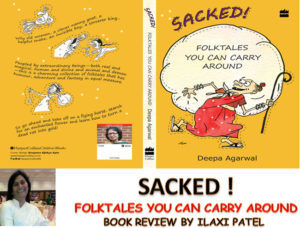
Dive into Imagination World with Folktales
Sacked ! The Folktales you can carry Around.
Book Review by Ilaxi Patel
Sacked – The Folktales you can carry Around is an amazing set of 15 stories by Deepa Agarwal which makes the characters come alive. One who says, Folktales are boring got to read these stories with its aesthetic appeal and cultural ethics that throw light to yester years with the long fading away of folktales told by Grandmoms.
Deepa Agarwal’s stories have vivid imaginative characters, focused on action with simple sense of justice and with happy endings – a Once upon a time to Happily lived ever after. They live up to convey wisdom, educate, entertain, discipline the children to grow up gracefully. These are the simple fairy tales, tall tales, trickster tales and the stories that revolve around the Animals – The Talking Parrot and the Flying Horse, The Golden Rat, How Manjari Fooled the Jackal, Roll my Pumpkin, promptly to mention few. The Author’s story collection create sparks of interest to children with the narration and fuel their curiosity to dive into imagination world. Some of the stories in the book have elements of humour and wits which bring gleam into the curious eyes and fills their heart with sheer joy. Roll my Pumpkin is one example of how an old woman fooled the animals and ran away – a folktale that is passed on from Grandmoms to Moms and is still fondly retold to
children.
Deepa Agrawal’s folktales revolve around usually at places like woods, magical kingdom, demons – fantasy that would roll over with thrilling excitement. The Music loving Demon, King Vikramaditya and the Princess of China have fantasy element of magic and fun that children would love to explore. Tall tales where finally the Good wins over the evil.
The characterization, setting, plot, theme and style of Deepa Agrawal’s stories are well chosen stories to tell tales which even adults would love to read and tell their children/Grandchildren. Quick reads, descriptive and to the point, the Author in a simple manner pens down the stories for children who grow with easy understanding and insight.
The Author is a Poet, writer and a Translator which makes her uniquely pen this Book for children after having written about fifty books in English and Hindi for both children and adults. She received the N.C.E.R.T. National Award for Children’s Literature in 1993 for her picture book Ashok’s New Friends. Her historical fiction Caravan to Tibet was on the
IBBY (International Board on Books for Young People) Honour List 2008.
Sacked – The Folktales you can carry Around is published by Harper Collins. It is a collection of stories made to feel lively, written in contemporary style with added humour, adventure and amazing flights of fantasy. Brought alive with illustrations by Anupama Ajinkya Apte makes it an interesting visual. Neatly crafted illustrations, the Book is a catchy pick.
All 4 Stars – If you have children and wondering what Folk stories to tell, here’s a sure pick. Place it on a child’s book shelf and he’ll love to read too.
The post Sacked – Folktales by Deepa Agarwal appeared first on Newspaper for Kids with Resources for Parents and Teachers Wonderland of Information – Education – Entertainment - kidfreesouls.com.
How to write a Story
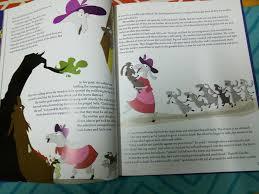
Like a great journey, literature can show you things you have never seen before and will never forget. Literature gives order to human experience. It explores cultural values. It demands an emotional response from the reader. To write a story, it requires real experience and also to dive into the imagination world and it sure isn’t a cup of tea for all! Written literature includes a huge variety of text, both fiction and non fiction, such as poetry, plays, novels, short stories, travel accounts, diaries, autobiographies, biographies, collection of letters, essays, histories and philosophy. Oral Literature include folk tales, epic poems, children’s rhymes, riddles, prayers and made up stories. Freesouls scoops into the Literature world to provide basic guidelines on the Elements of Literature :
Some of the Principal elements are plot, theme, style, image, sound patterns, and characterization. Sometimes a detective story might have a plot and other elements but may not have sound patterns or a lyric poem will contain sound and image patterns but no plot! However, to write a story, the following pattern is applicable:
Charaters : Memorable characters come alive as readers read. They live on the page, in mind and heart. Yet, they really don’t exist! Writers must know their characters thoroughly and have a clear picture of each one’s appearance, speech and thoughts. It becomes easier to describe action or ideas. The characters make up the central interest of many dramas and novels as well as autobiographies. Hence, built up a character that best suits your story.
Motivation: Character determines action. So, motives of the character in writing make sense. Tom Sawyer and Oliver Twist are two difference characters and likewise, if twisted than these classics would turn into a different kind of book. Therefore, motivation means the reason for a character’s actions.
Setting: This is the place where the character’s story occurs. The characters do not hang in space but their existence is build around the world somewhere, imagined or described place by the author. Even an alien has an imaginery place to live in an outer world! The Missouri of Tom Sawyer is very different from the London of Oliver Twist and these differences help in setting up two characters. Writers describe the world they know. Sights, sounds, colors, and textures are all vividly painted in words as an artist paints images on canvas. A writer imagines a story to be happening in a place that is rooted in his or her mind. The location of a story’s actions, along with the time in which it occurs, is the setting. Setting is created by language. How many or how few details we learn is up to the author.
Plot: It tells us what happens to the character in the story. A plot is built around a series of events that take place within a definite period of time. No rules exist for the order in which the events are presented. A unified plot has a beginning, a middle and an end. The story has an exposition, rising action, a climax, outcome. The exposition gives background or situation of the story. The rising action builds upon the creation, suspense or reader’s desire to find what happens next and the climax is the highest point of interest. It’s like a character with a problem, how he faces the problems and the end as to how he overcomes the problem – a happy or a sad note or maybe letting the readers conclude
Theme: The theme develops from the interplay of character and plot. The theme may warn a reader to lead a better life or a different kind of life. In short, convey the author’s moral beliefs.. The theme of a fable is its moral. The theme of a parable is its teaching. The theme of a piece of fiction is its view about life and how people behave.
In fiction, the theme is not intended to teach or preach. In fact, it is not presented directly at all. You extract it from the characters, action, and setting that make up the story. In other words, Sentimental or emotional, the reader draws his own conclusions on the theme of the story. The writer’s task is to communicate on a common ground with the reader. Although the particulars of your experience may be different from the details of the story, the general underlying truths behind the story may be just the co-check out the title. Sometimes it tells you a lot about the theme.
Style: This is the way the writer uses words to create Literature. One word following the other, one paragraph leading to the next. The way writers write is a part of what they have to say. What kind of words to use, how to present details or should the paragraphs be long or short? These are the questions that requires answers to solve the problems of style of writing. First place narration or third person narrated story. Attitude is also a style – positive or negative style of writing is very important.
Grab your pens or click on to the keyboards and write stuff right! Writing is a hobby that you can pursue anywhere, anytime with the right attitude of ‘Reading’ – Its awareness all the way. After all, all Literature needs readers who help to create literature by responding to the ideas and thoughts of a writer.
20th March is #WorldStoryTellingDay – It is a global celebration of the art of oral storytelling. It is celebrated every year on the March equinox, on (or near) March 20. On World Storytelling Day, as many people as possible tell and listen to stories in as many languages and at as many places as possible, during the same day and night. Participants tell each other about their events in order to share stories and inspiration, to learn from each other and create international contacts.
The significance in the event lies in the fact that it is the first global celebration of storytelling of its kind, and has been important in forging links between storytellers often working far apart from each other. It has also been significant in drawing public and media attention to storytelling as an art form.
At Swagat Children Library, we have Saturdays as Story Telling and Reading Sessions all throughout the year. And out Facebook Page has Audio Live Stories being narrated for followers.
Wanna Be a Writer? Join Swagat Children Library for Creative Writing Course
The post How to write a Story appeared first on Newspaper for Kids with Resources for Parents and Teachers Wonderland of Information – Education – Entertainment - kidfreesouls.com.
March 21, 2018
Go Dark to help children sleep, says Researchers
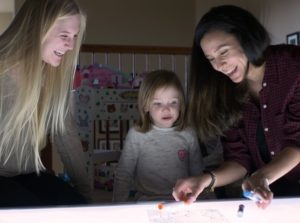
Children’s eyes let in more light than adults’ eyes do.
You may think I am speaking metaphorically, perhaps about how open children are to the world and its beauties, or how easily their brains are shaped by what they see and hear. But it turns out that children’s eyes are anatomically slightly different, and they do let in more light, and a new study suggests that exposure to bright light before bedtime can throw their body clocks out of whack.
In an article published this week in the journal Physiological Reports, researchers report on an experiment in which they measured levels of melatonin, the hormone that regulates sleep, in a group of 10 children, ages 3 to 5. First they had the children follow a regular sleep schedule for five days, and checked their saliva several times a day to measure their baseline levels of melatonin. Then, on day six, they turned children’s homes into low-light “caves,” covering the windows with black plastic and swapping in low-wattage light bulbs.
Lameese D. Akacem, an instructor at the University of Colorado, Boulder, who was the lead author on the study, said that the children spent the whole day in the dim light, again with researchers tracking their melatonin levels. Then, the next day, an hour before bedtime, the preschoolers were exposed to bright light for an hour, by playing on a “light table” — a glass-topped surface containing a bright light source.
“We know from a lot of studies done in adults, adolescents, school children, that the body clock is very sensitive to light exposure,” Dr. Akacem said. “Particularly in the evening, it tends to suppress the sleep-promoting hormone melatonin.”
But it had not been studied in preschool age children, and there was reason to believe that they might be even more sensitive.
“We were trying to simulate what would go on at home when you put a child to bed,” said Dr. Monique LeBourgeois, an associate professor of integrative physiology at the University of Colorado, Boulder, and the director of the sleep and development lab; she was the senior author on the study. A child who is resisting being put to bed may come out of the dark bedroom and approach the parents in rooms where lights are on, she said, and “they get blasted with light. Just even a short exposure of bright light may suppress melatonin and shut down that sleep-promoting effect.”
The average bedtime for the children in the study was 8:27 p.m., and in their dim-light “caves,” with no bright light to interfere, the researchers found that the children began secreting melatonin, on average, at 7:47 p.m., marking the beginning of their “biological night.”
And then the next night they played on the light tables. “We found that the bright light exposure suppressed melatonin by almost 90 percent, and the effects persisted even after the kids returned to dim light,” Dr. Akacem said. Fifty minutes after the light was gone, most of the children were still not back to 50 percent of the melatonin levels seen the day before.
Melatonin secretion is usually low during the day, and then rises in the evening, causing the body clock to prepare for sleep. The melatonin comes from the pineal gland, located between the two hemispheres of the brain, which is neurologically connected to body clock central, the suprachiasmatic nucleus in the hypothalamus, which in turn is influenced by how much light gets through to the retina.
The lens is a lot clearer in preschool children,” Dr. Akacem said. “The pupils are larger, which allows more light to hit the retina and a stronger signal to the clock.” The lens, which allows light into the eye, accumulates protein as we get older, which causes a kind of yellowing; by the time we’re in our 40s, our eyes are dimming the light for us a little.
Dr. Judith Owens, the director of sleep medicine at Boston Children’s Hospital, said preschoolers’ “circadian profile and melatonin release is relatively earlier compared to adults.”
“One important takeaway is that parents should avoid having children exposed to very bright light before bedtime,” Dr. Akacem said. This study lays the foundation, she said, for looking in more detail at young children’s sensitivity to light, so that researchers can make more specific practical recommendations to parents.
The same research group is starting a longer, larger study, looking at different light intensities and how they affect children’s body clocks.
And since bedtime resistance and difficulty falling asleep are the primary sleep problems in this age group, she said, it’s worth thinking about how this sensitivity to light may affect children’s behavior, even while further research is being done. Children whose melatonin response has been dampened may look “tired and wired,” Dr. LeBourgeois said. “They are tired, but the clock is not sending the signals to the pineal in a way that would facilitate sleep.”
Many toddlers and preschoolers, for example, do what Dr. LeBourgeois calls “curtain calls,” popping back up again with new requests. That means they’re in and out of the bedroom, and if possible, wherever they are, the light should be dim.
So an hour before bedtime, parents might consider trying for a little of that cavelike atmosphere. Turn off bright overhead lights, use your dimmer switches and try to find an alternative to using the bright lights in the bathroom. “Dimming the light allows melatonin to rise in its natural pattern,” Dr. Akacem said.
“A lot of times parents will ask about night lights,” Dr. Owens said. “My recommendation is to have them low near the floor, you don’t want anything shining directly in the eyes.” She also stressed the importance of a regular consistent bedtime, even on weekends, for children in this age group, and putting them to bed before 9, early enough so that they get all the sleep they need.
Children look at the world through relatively new eyes. Beginning to tease out how light affects their brains should help us understand the behaviors that we see, and appreciate the immediacy of the ways that the brain is affected by its surroundings.
“The bottom line is, this is a very prevalent problem for parents and for preschoolers, and light probably holds the key,” Dr. LeBourgeois said.
Pic courtesy : NYT / e environment, Kidsfreesouls
The post Go Dark to help children sleep, says Researchers appeared first on Newspaper for Kids with Resources for Parents and Teachers Wonderland of Information – Education – Entertainment - kidfreesouls.com.

